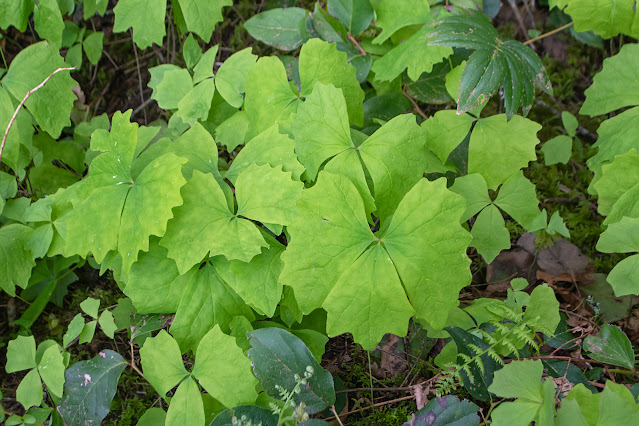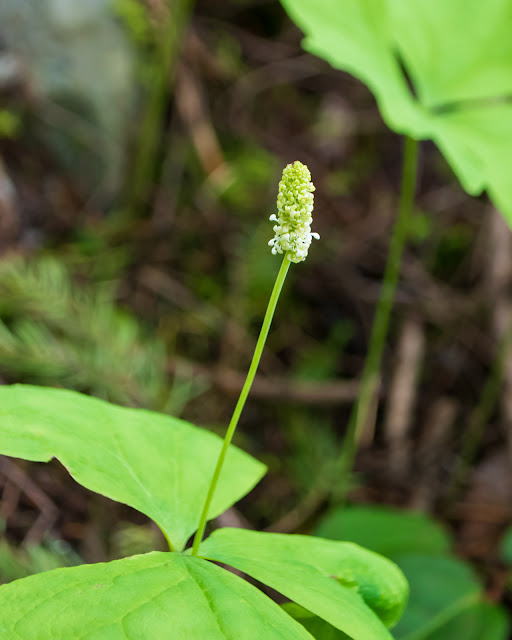It's April and my hyacinths are perfuming the entryway, the tulips are almost ready to open, the forsythia is dropping yellow petals on the lawn, and the first hairy cat's ear (grrrr!) has dug itself in. (And I dug it out.) There are bluebells on the way, and mock orange, and Dutchman's breeches. I've been out cleaning up, trimming the hydrangea and weeding around the hollyhocks. Ah, spring!
And on my hard drive, I've been sorting spring flowers from years gone by. Here are a few of them; most I'd never finished processing.
 |
| Indian plum, aka osoberry. A welcome native. |
 |
| Humble wood violets. |
Back in 2009, in a patch of blackberry canes and nettles at Terra Nova, we found these snowflake flowers.
The site had been, long ago, a homestead; there were daffodils and old fruit trees. These had been in someone's garden before the blackberries moved in.
 |
| Aka dewdrop |
 |
| Lily of the valley. From my old garden in Delta. |
 |
| Half hidden in the shade at the edge of the woods at Woodhus Creek, vanillaleaf in bloom. The flowers don't last long, but the drying leaves are fragrant all summer. |
 |
| And it wouldn't be spring without crocuses, would it? |
~~~~~~~~~~~~~~~~
Ya estamos a medio abril, y mis jacintos están derramando su perfume frente a mi puerta. Los tulipanes tienen grandes botones, rojos y amarillos; la forsitia cubre el pasto de pétalos amarillos; y las primeras "
orejas peludas de gato", una hierba invasiva y nociva, se han establecido en el césped. (Y ya las arranqué.) Hay
campanillas,
naranja falsa (
Philadelphus sp.), y
Dicentra, todavía sin flores. He estado podando las hortensias, sacando hierbas malas de entre las malvas locas, y haciendo limpieza general. ¡Ah, la primavera!
Y regresando a la casa y la computadora, he estado revisando fotos viejas de flores primaverales. Aquí hay algunas que encontré, casi todas del mes de abril, pero en años anteriores.
1.
Oemleria cerasiformes, llamada Ciruela India, o también frutilla de osos.
2. Violeta nativa
3. y 4. Encontramos esta planta bajo un lío de zarzamora. Se llama "
copo de nieve".
5. Lirio del valle, de mi jardín en Delta.
6. "
Hoja de vainilla", una planta nativa del bosque. Las flores caen pronto, pero las hojas siguen aromáticas todo el verano.
7. Y no hay primavera sin crocus.














































